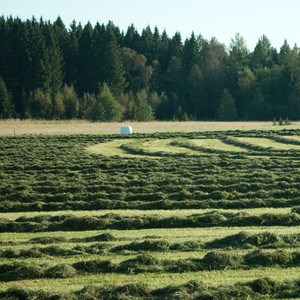Life cycle analysis is an insufficient method for analyzing the entire food system. The researchers have shown that by combining four methods; life cycle analysis, ecosystem service analysis, analysis of yield gaps and agroenvironmental indicators, can have a more comprehensive framework for environmental system analysis.
This combination of methods is now being tested in a system study where crop rotations with and without hedges are compared, and high-quality protein feed from a biorefinery that processes grass and clover is evaluated. Basic sustainability aspects such as soil fertility and soil health should be included in the future.
- Life cycle analyses have historically focused on emissions to air and water (such as methane and nitrate) and resource use, especially energy (such as diesel). It's something of a "black box thinking" with a sharply defined system - but agriculture is not like a normal industry, but agriculture exists as part of a landscape - we call it an agroecosystem, says Christel Cederberg.
Read more on the Swedish version of this page.
Project leader:
Christel Cederberg, Chalmers University of Technology
christel.cederberg@chalmers.se
Telephone: 0708- 71 03 74
